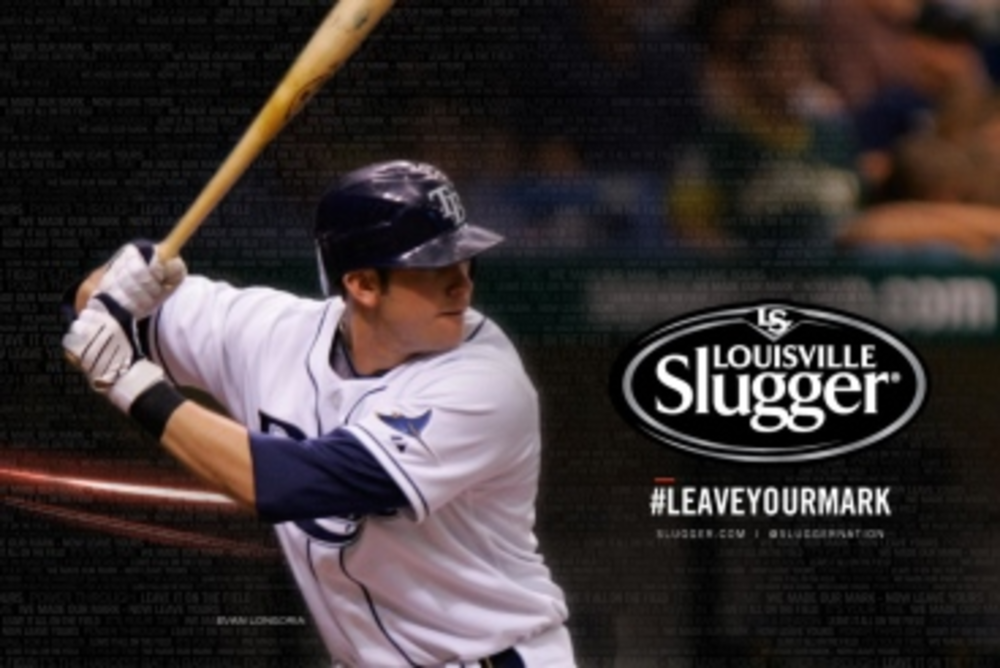“Even icons need to be refreshed,” says Hillerich & Bradsby VP of Global Marketing Kyle Schlegel, who knows whereof he speaks. At Procter & Gamble he was part of a team that saved the Old Spice brand from being scuttled. Now he steps to the plate in an attempt to bring new pop to the brand identity (and sales) of H&B brand Louisville Slugger, the classic American baseball bat that, unlike so many current overnight sensations, is truly deserving of the icon label.
As a new baseball season got underway on April 1, Schlegel and the Slugger team staged their own opening day on a new era of engaging important customer segments: high school baseball players, college softball players, and their parents. Though Slugger commands an estimated 50% of the $178 million bat market in the United States, many of these core customers have deserted the favored weapon of Babe Ruth for new brands such as Marucci, Old Hickory, and DeMarini that promise enhanced performance. History is fine to young ballplayers; home runs are better.
“We want to be a diamond sports player in all categories: gloves, batting gloves, catchers equipment,” says Schlegel. “We’re in the top three to five brands in those categories, here, but we want to be number one or two.”
What Schlegel lacks from his P&G days is million-dollar marketing budgets. At H&B, he has a media budget of $40,000 to $50,000—and most of that will go to Twitter. Along with introducing a new Slugger logo and the new MLB Prime pro-level wooden bat this week, the Slugger brand set off on a round-the-bases social media campaign called “#Leave Your Mark.” H&B is also using Facebook, Pinterest, and Instagram in the company’s effort to challenge young baseballers to share how they intend to leave their own marks on America’s pastime.
The company launched videos via all of those social vehicles showing wooden bats being crafted in its factory and employees reciting what Schlegel calls the new company’s manifesto. “We equipped Babe Ruth and he redefined greatness. We outfitted Derek Jeter and redefined clutch,” goes the script. “Those are their marks, but who will you inspire?”
On the first two days of the campaign, video viewers were led to a microsite asking them to download and print a “#Leave Your Mark” placard on which they could write a short response to the question: “Who has left a mark on you and how?” They were then asked to photograph themselves with the sign and post it on Twitter or Instagram. Twitter alone, says Schlegel, had 2,000 posts. When he arrived at the company in February 2012, it had a total social media following of 25,000 people. It now has close to 300,000, and Schlegel is poised to run up the score.M
“During the baseball season, something happens every single day within our marketplace. By comparison, there’s not much that happens every single day in deodorant,” Schlegel says. “That makes social media our focus. Because we don’t have access to broad awareness vehicles, we engage with our community throughout the week through social media.”
Slugger uses a variety of social properties, because the boy baseball players and girl softball players who are his targets use the mediums differently. Shlegel uses social as an inexpensive testing vehicle for the brand. His agency MEplusYOUwill spread several creative executions of photos and videos across various properties and measure response of segments to guide future placements.
“Boys don’t really care what happens with our pro endorsers once they leave the field. Derek Jeter, Buster Posey—they only care what happens with them on the field” Schlegel says. “Not so with girls. One of our top endorsers is Olympian Jessica Mendoza, considered to be the best softball hitter in the world. She is expecting a child and girls on social media want to know all about it.”
Other key purchasers and influencers such as parents, coaches, and league administrators are more considerate of the long-term effects of what happens on ball fields, and Slugger has a different strategy for engaging them. “They’re a big part of the Leave Your Mark campaign, but they’re interested in how to build character with kids,” says Schlegel, who is working on forming partnerships to be involved with leagues on the field level and is also producing videos aimed at coaches with themes such as how to treat young players with respect.
“It’s early, but we’re excited about the numbers we’re seeing in the social sphere,” says Schlegel. “We think we’ve struck a chord.”








